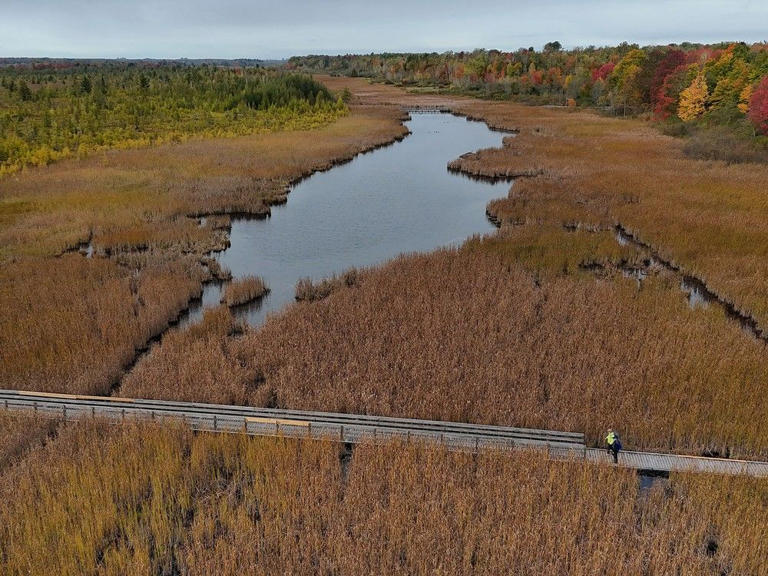29/10/2024 Canada (Canadà), Ontario, Ottawa
“If you ever come across anything suspicious like this item, please do not pick it up, contact your local law and/or enforcement agency for assistance”
Story by Nathan Fung
An unknown number of unexploded bombs dating back to the Second World War are buried in Ottawa’s Mer Bleue bog, a popular hiking area, the Department of National Defence confirmed Tuesday. The 3,500-hectare conservation area, which is owned and operated by the National Capital Commission (NCC), is located in Ottawa’s east end. The area is also home to several rare species of plants and wildlife, according to the NCC’s website. Andrée-Anne Poulin, a spokesperson for the Department of National Defence, said in a statement Tuesday that a practice bombing range was in active use in the area between 1942 and 1945. The types of munitions dropped included aerial bombs of up to 1,000 pounds (about 450 kilograms). Declassified documents outlining the presence of unexploded bombs in the Mer Bleue bog were first obtained by the Ottawa Citizen. Poulin said based on historical maps and aerial photographs, the department knows where the bombs were dropped, but doesn’t know how many are there. Poulin said a bomb disposal team was tasked in 1960 with clearing the former range of unexploded ordnance (UXO), but the nature of the terrain made the job difficult and it couldn’t be declared completely free of UXO. The NCC opened negotiations with the defence department in 1964 to assume ownership of the area, with the intent of using the property as parkland. The commission was made aware of the remaining UXO and agreed to purchase the land in April 1965.
Mounties are reminding anyone who comes across explosives or live ammunition to call police for assistance and to not handle them yourself.
Dear editors, Biography of a bomb is aimed at highlighting the danger caused by unexploded bombs. Moreover, the most important aspect is that we work completely non profit, what drives us is raising awerness about this topic. We make use of your pictures and articles, but we need them to put a context in how findings are done. We trust in your understanding. We will (and we always do) cite the source and the author. We thank you for your comprehension.





